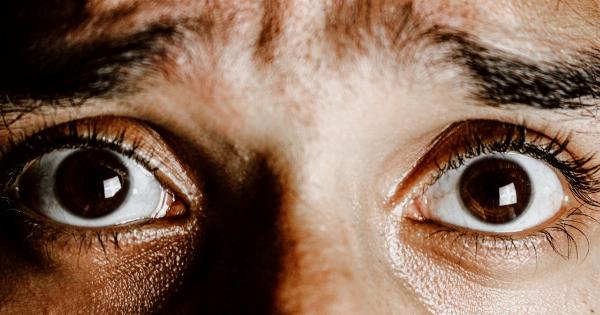A panic attack can be a terrifying experience. It is an intense episode of fear and anxiety that can cause various physical and emotional symptoms.
Understanding and recognizing the signs of a panic attack is crucial for effective management and seeking appropriate help. This article will provide you with essential information about panic attacks and the key signs to be aware of.
What is a Panic Attack?
A panic attack is a sudden episode of intense fear or discomfort that reaches its peak within minutes. It is different from the normal feelings of anxiety as it is more severe and overwhelming.
Panic attacks can occur unexpectedly or be triggered by specific situations, such as phobias or traumatic events.
Common Signs and Symptoms
Recognizing the signs and symptoms of a panic attack is essential in order to provide timely support and assistance. Here are some common signs to look out for:.
1. Shortness of Breath
During a panic attack, many individuals experience shortness of breath or a feeling of being unable to get enough air. This can lead to rapid breathing and hyperventilation, which in turn can intensify the panic attack and create a cycle of fear.
2. Chest Discomfort or Pain
Chest discomfort or pain is another common sign of a panic attack. Some individuals may mistake it for a heart attack due to the similarity in symptoms, such as a tightness or pressure in the chest.
3. Rapid Heartbeat
A racing or pounding heart is a typical symptom of panic attacks. This can be accompanied by palpitations or a sensation that the heart is skipping beats, which can further increase anxiety and distress.
4. Sweating and Shaking
Excessive sweating, trembling, and shaking are physical manifestations of the fight-or-flight response during a panic attack. These symptoms are the body’s way of preparing for the perceived threat.
5. Feeling of Choking
During a panic attack, individuals may feel a sensation of choking or being unable to swallow properly. This can be distressing and often contributes to the overall fear and anxiety experienced.
6. Dizziness or Faintness
Dizziness, lightheadedness, or faintness are common symptoms during a panic attack. These feelings can be alarming and may lead individuals to worry about fainting or losing control.
7. Numbness or Tingling Sensations
Some people experience tingling or numbness in their extremities, such as fingers or toes, during a panic attack. This sensation is caused by the body’s response to stress and anxiety.
8. Fear of Losing Control or Going Crazy
A common psychological aspect of a panic attack is the fear of losing control or going crazy. Individuals may feel disconnected from reality or as if they are losing their mind, adding to the distress experienced.
9. Fear of Dying
Many individuals suffering from panic attacks have an intense fear of dying during an episode. This fear is often related to the physical symptoms experienced, such as chest pain or shortness of breath.
10. Intense Anxiety and Fear
Overall, panic attacks are characterized by intense anxiety and fear. The feelings of terror can be overwhelming and cause individuals to act in ways that may seem irrational or out of character.
Seeking Help for Panic Attacks
If you or someone you know is experiencing panic attacks, it is essential to seek help and support. Consult a healthcare professional who can assess the situation, provide diagnosis, and suggest appropriate treatment options.
Managing Panic Attacks
While panic attacks can be distressing, there are several techniques that can help manage and reduce their frequency:.
1. Deep Breathing
Practice deep breathing exercises to help calm the body and mind. Focus on slow, deep breaths in through the nose and out through the mouth.
2. Progressive Muscle Relaxation
Engage in progressive muscle relaxation techniques, where you systematically tense and relax each muscle group in your body. This can promote relaxation and decrease feelings of tension and anxiety.
3. Maintain a Healthy Lifestyle
Ensure you are getting enough sleep, eating a balanced diet, exercising regularly, and minimizing stress. Taking care of your overall well-being can help reduce the frequency and severity of panic attacks.
4. Identify Triggers
Work with a therapist or counselor to identify any specific triggers that may be causing or worsening your panic attacks. Once identified, strategies can be developed to manage or avoid these triggers.
5. Cognitive-Behavioral Therapy (CBT)
Consider participating in cognitive-behavioral therapy, which has been shown to be effective in treating panic disorder and panic attacks. CBT helps individuals identify and challenge negative thought patterns and develop healthier coping strategies.
Conclusion
Recognizing the signs of a panic attack is crucial for ensuring prompt support and appropriate treatment. By being aware of the common symptoms, you can better understand what you or someone you know may be experiencing.
Remember, seeking help and learning effective management techniques can significantly improve one’s quality of life.











